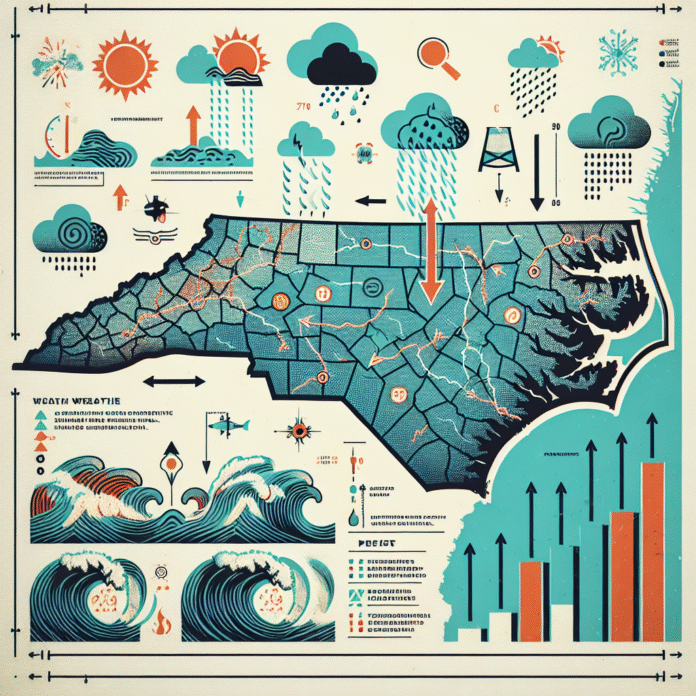Increased Frequency of Floods and Storms in North Carolina
“`html
Understanding the Increasing Frequency of Floods and Storms in North Carolina
In recent years, North Carolina has witnessed a troubling trend: the rising occurrence of floods and storms. This surge in extreme weather events can be attributed to several interrelated factors, including climate change, urban development, and natural geographical features.
The Impact of Climate Change
Climate change plays a significant role in the increasing severity and frequency of storms in North Carolina. As global temperatures rise, the atmosphere can hold more moisture, leading to heavier rainfall. This phenomenon results in flash floods and prolonged flooding, particularly in vulnerable coastal and low-lying areas. Moreover, warmer ocean temperatures can intensify hurricanes, increasing their destructive potential as they make landfall.
Urbanization and Land Use Changes
The rapid urbanization in North Carolina has further exacerbated flooding issues. As cities expand, natural landscapes are replaced with impermeable surfaces like asphalt and concrete, which hinder water absorption and increase runoff. This change not only magnifies the impact of heavy rains but also disrupts the natural drainage systems that once mitigated flooding.
Geographical Vulnerabilities
North Carolina’s unique geography also contributes to its susceptibility to storms. The state is located along the Atlantic coast, making it a prime target for hurricanes and tropical storms. Additionally, the presence of numerous rivers and lakes can lead to significant flooding, especially when these water bodies overflow during heavy rains. The combination of these geographical features creates a perfect storm for flooding, particularly in areas that have experienced significant development.
Preparedness and Resilience Efforts
In response to the increasing threat of floods and storms, local governments and organizations are implementing various preparedness and resilience strategies. These efforts include improving drainage systems, restoring wetlands, and enforcing stricter zoning regulations to manage development in flood-prone areas. Community education initiatives are also crucial, helping residents understand the risks and prepare for potential disasters.
The Role of Community Engagement
Community engagement is vital in addressing the challenges posed by flooding and storms. Local organizations, including Enlace Latino NC, are working to ensure that marginalized communities receive the information and resources they need to prepare for extreme weather events. By fostering collaboration between residents, local governments, and emergency services, these efforts aim to build a more resilient North Carolina.
As the frequency of floods and storms continues to rise, it is imperative for residents and policymakers alike to take proactive measures. Through a combination of climate awareness, sustainable development practices, and community involvement, North Carolina can better prepare for the challenges that lie ahead.
“`
